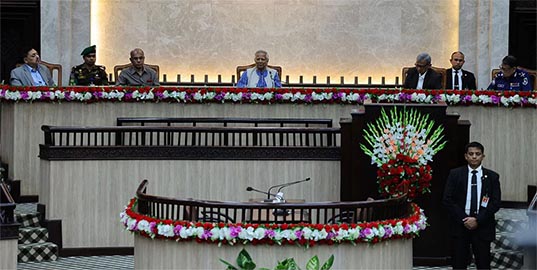How Does Physical Activity and Exercise Affect Testosterone Levels?

- Update Time : Saturday, 3 February, 2024, 03:30 pm
- 102 Time View

Online Desk: Testosterone, a crucial hormone for both men and women, plays a vital role in various bodily functions. One factor that significantly influences testosterone levels is exercise and mental well-being. So, it is natural to wonder how these two interact. Let’s explore the intricate relationship between exercise and testosterone to understand how physical activity impacts hormonal balance.
What is Testosterone?
Testosterone, a pivotal hormone, is present in both men and women, although commonly associated with male characteristics. Produced in the testicles in men, ovaries in women, and to a lesser extent, the adrenal glands, it plays a crucial role in diverse bodily functions.
This hormone is instrumental in the development of male reproductive tissues, including the testes and prostate. Often referred to as the “male sex hormone,” testosterone acts as a conductor orchestrating various bodily functions, impacting muscle growth, bone density, mood, libido, and more.
In women, testosterone is essential for maintaining reproductive health and influencing aspects of mood and energy.
The decrease of testosterone hormone with age is natural, but factors like stress and lifestyle can accelerate this process. Understanding how to optimise testosterone, perhaps through targeted physical exercises, can help promote overall health and well-being.
How Exercise Affects Testosterone
Relationship between Exercise and Testosterone
The correlation between exercise and testosterone levels in men has been well-established by different research initiatives. Long-term engagement in physical activity has shown a consistent increase in testosterone levels.
Interestingly, certain physical exercises can induce a temporary spike of testosterone hormone within fifteen minutes to an hour after completion of the workout. Such short term impacts are especially noticeable in younger men. This immediate boost is more pronounced when workouts are performed in the morning, aligning with the natural peak of testosterone levels during that time.
However, sustaining elevated testosterone levels over the long term requires regular exercise. While there is currently no conclusive evidence of increased testosterone levels in women due to exercise, the presence of testosterone during workouts aids in training and muscle recovery.
Research reveals nuanced findings show that men experience significant testosterone increases post-weightlifting, whereas women show minimal changes. Resistance training in women has a temporary testosterone boost impacting fat distribution.
For older men, regular physical activity not only raises testosterone levels but also enhances growth hormone levels and positively affects brain function. In those previously inactive, exercise led to a notable increase in dihydrotestosterone (DHT).
Interestingly, even in men with obesity, regular exercise proved more effective in boosting testosterone levels than weight loss diets alone. Maintaining healthy or heightened testosterone levels is crucial, not just for muscle building but for overall well-being and exercise progress.
Exercises that Increase Testosterone
Not all exercises can create the same impacts when it comes to elevating testosterone levels. Understanding the most effective workouts can contribute significantly to achieving the desired hormonal balance. Here is a closer look at some of the best exercises known to increase testosterone.
Resistance Training
Resistance training, particularly through weightlifting, stands as a proven method to increase testosterone levels both in the short and long term. This exercise modality has been extensively supported by research, showcasing its effectiveness, especially for men.
Engaging in strength/resistance training three days a week for four weeks has been directly linked to immediate post-workout and sustained increases in testosterone levels. However, it is important to acknowledge individual variations, as studies reveal gender-specific responses.
While a 30-minute weightlifting session led to a 21.6% increase in testosterone levels for men, the increase was slightly lower at 16.7% in women, suggesting a nuanced effect. Some studies even hint at temporary testosterone gains in women.
Different researches show that, when targeting larger muscle groups, resistance training can contribute to heightened testosterone production.
Therefore, an overall focus on strengthening the entire body not only supports metabolism but also aids in injury prevention.
HIIT for Men
High-Intensity Interval Training (HIIT) emerges as a proven strategy for amplifying testosterone levels, specifically in men. Studies indicate that men engaging in interval training, involving 90 seconds of intense treadmill running interspersed with 90-second recovery periods, experience a more significant boost in free testosterone levels compared to continuous 45-minute running sessions.
This dynamic approach to exercise, characterised by short but intense bursts followed by brief recovery periods, proves highly effective in elevating testosterone levels. Further reinforcing the impact of HIIT, supplementing with DHEA alongside five sessions of 2-minute cycling exercises demonstrated increased testosterone levels in both younger and older men.
The essence of HIIT lies in completing short yet intense activity periods that substantially elevate the heart rate, followed by recovery periods of similar or slightly shorter durations. An entire HIIT workout typically lasts between 20 minutes to an hour, making it a time-efficient and powerful method for enhancing testosterone levels in men.
Can Every Exercise Increase Testosterone?
While maintaining healthy testosterone levels is crucial for both men and women, certain exercises, when done excessively, may lead to a decrease in testosterone, particularly in women. For women, maintaining an optimal balance in testosterone levels is crucial to avoid potential side effects such as abnormal hair growth, balding, and acne.
Striking the right balance between different types of exercises and avoiding excessive endurance training can contribute to hormonal health. It is important to recognize that weight loss, achieved through a balanced approach, can positively influence hormonal balance, emphasising the importance of moderation and diversity in one’s fitness routine. It is essential to strike a balance to avoid potential negative effects on hormonal health.
HIIT for Women
HIIT, known for its testosterone-boosting effects in men, can have the opposite impact in women. A 20-minute interval exercise, consisting of 8 seconds of cycling and 12 seconds of rest, has been shown to lower testosterone levels in women.
Cardiovascular Exercise
Surprisingly, there is no substantial evidence linking cardio exercises to changes in testosterone levels, irrespective of gender. However, excessive cardio, especially endurance exercises like marathon running or cycling, may contribute to reduced testosterone levels over time. The breakdown of muscles during prolonged endurance exercises could be a factor contributing to the gradual decline in testosterone levels.
Verdict
The Testosterone hormone contributes to build muscle mass, bone density, and overall well-being, especially in male. The relationship between exercise and testosterone is nuanced and multifaceted. Balancing cardiovascular, resistance, interval training, proper nutrition, sleep, and stress management, can contribute to the overall hormonal balance of a human body. Consistency in these efforts, according to individuals age level, is key to maintaining optimal testosterone levels.
















